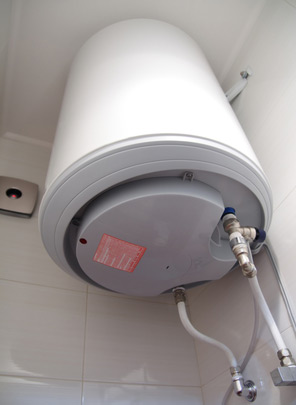Right here in the next paragraphs you will discover a bunch of helpful content when it comes to How to Maintain a Hot Water Heater in a Few Simple Steps.

Hot water is crucial for daily comfort, whether it's for a revitalizing shower or cleaning meals. To ensure your warm water system runs successfully and lasts longer, regular maintenance is vital. This post offers practical pointers and insights on how to maintain your home's warm water system to avoid disturbances and expensive repair work.
Intro
Preserving your home's warm water system could seem challenging, yet with a few straightforward steps, you can guarantee it runs smoothly for many years to come. This overview covers everything from recognizing your warm water system to DIY upkeep tips and recognizing when to hire specialist assistance.
Relevance of Preserving Your Warm Water System
Regular upkeep not only expands the lifespan of your warm water system yet likewise ensures it operates efficiently. Neglecting upkeep can bring about reduced efficiency, greater energy bills, and also early failing of the system.
Indications Your Hot Water System Demands Upkeep
Understanding when your warm water system requires attention can avoid significant concerns. Keep an eye out for signs such as inconsistent water temperature, unusual sounds from the heating unit, or rustic water.
Recognizing Your Warm Water System
Before diving into maintenance jobs, it's practical to comprehend the fundamental elements of your hot water system. Usually, this consists of the water heater itself, pipes, anode poles, and temperature controls.
Month-to-month Upkeep Tasks
Regular monthly checks can help capture small problems prior to they escalate.
Flushing the Hot Water Heater
Flushing your water heater removes sediment accumulation, enhancing effectiveness and extending its life.
Monitoring and Changing Anode Rods
Anode poles prevent rust inside the storage tank. Checking and replacing them when worn is critical.
Evaluating and Readjusting Temperature Settings
Adjusting the temperature setups ensures optimal efficiency and safety and security.
DIY Tips for Maintenance
You can perform several maintenance tasks on your own to keep your hot water system in leading problem.
Checking for Leakages
On a regular basis check pipelines and links for leaks, as these can bring about water damage and higher bills.
Testing Stress Alleviation Valves
Examining the stress safety valve guarantees it works correctly and prevents extreme pressure buildup.
Shielding Pipelines
Protecting hot water pipes decreases heat loss and can conserve power.
When to Call a Professional
While do it yourself maintenance is useful, some issues call for expert proficiency.
Facility Concerns Needing Professional Aid
Instances consist of major leaks, electric issues, or if your water heater is consistently underperforming.
Regular Expert Upkeep Perks
Expert maintenance can consist of thorough assessments, tune-ups, and making certain conformity with safety criteria.
Final thought
Regular upkeep of your home's hot water system is essential for performance, longevity, and cost financial savings. By following these ideas and knowing when to look for professional assistance, you can make certain a reputable supply of hot water without unforeseen disturbances.
How to Maintain an Instant Hot Water Heater
Before tinkering with your hot water heater, make sure that it’s not powered on. You also have to turn off the main circuit breaker and shut off the main gas line to prevent accidents. Also turn off the water valves connected to your unit to prevent water from flowing into and out of the appliance. 2. When you’re done, you have to detach the purge valves’ caps. These look like the letter “T†and are situated on either side of the water valves. Doing so will release any pressure that has accumulated inside the valves while at the same time avoid hot water from shooting out and burning your skin. 3. When the purge valves’ caps are removed, you have to connect your hosing lines to the valves. Your unit should have come with three hoses but if it didn’t, you can purchase these things from any hardware or home repair shops. You can also get them from retail stores that sell water heating systems. Read the user’s manual and follow it to complete this task properly. When the hosing lines are connected, open the purge port’s valves. 4. You should never use harsh chemical cleaners or solutions when cleaning your unit. Make use of white vinegar instead. It should be undiluted and you’ll probably use about 2 gallons. 5. Now flush your water heater. This task should probably take about 40 minutes. We can’t give you specific directions for this because the procedure is carried out depending on the type, model and brand of your heater. With that being said, refer to the user’s manual. 6. When you’re done draining the unit, you have to turn off the purge port valves again. Remove the hosing lines that you earlier installed on each of the water valves. Put the valve caps (purge port) back in their respective places and be very careful so as not to damage the rubber discs that are found inside these caps. 7. Now that everything’s back in place, check your user’s manual again to find out how to reactivate your water heating system. 8. Once it is working, turn one of your hot water faucets on just to let air pass through the heater’s water supply pipes. Leave the tap on until water flows smoothly out of it. https://www.orrplumbing.com/blog/2014/september/how-to-maintain-an-instant-hot-water-heater/

I came across that page about Tips For Maintaining Your Hot Water Heater when exploring the search engines. You should pause to distribute this entry if you liked it. We take joy in your readership.
Click Here